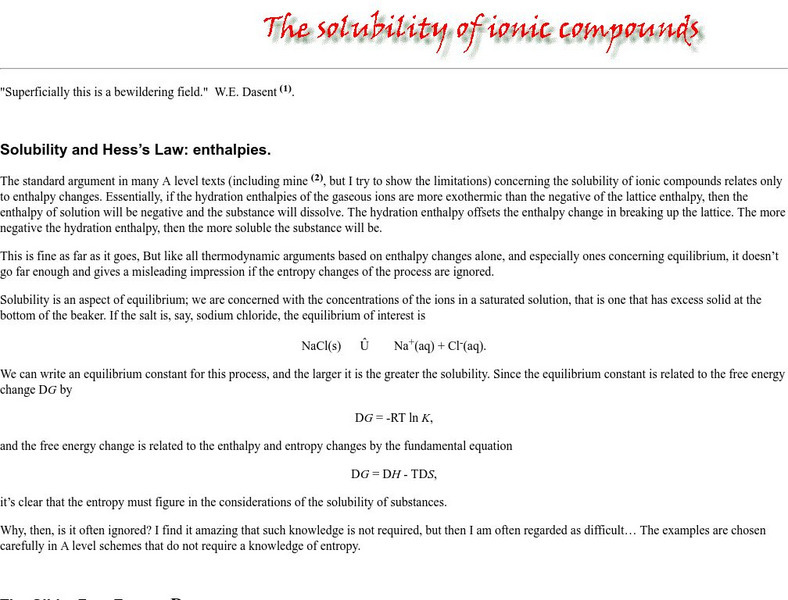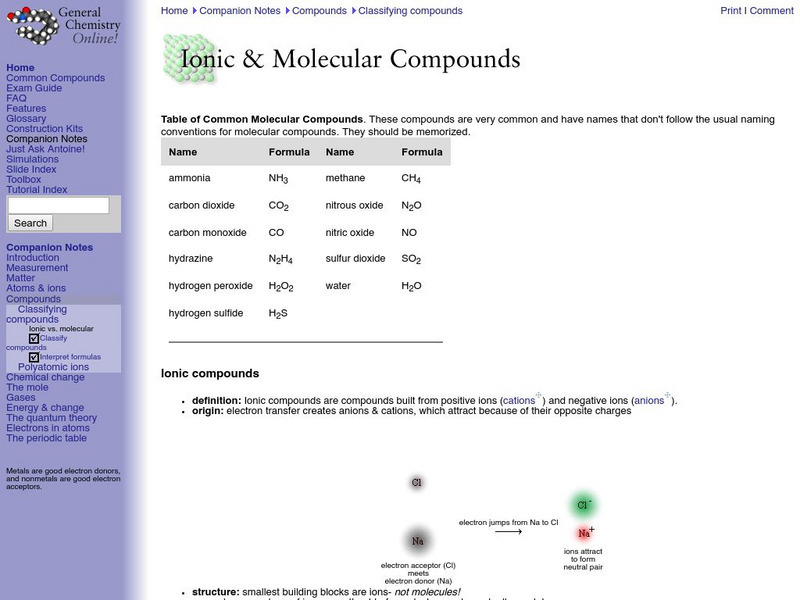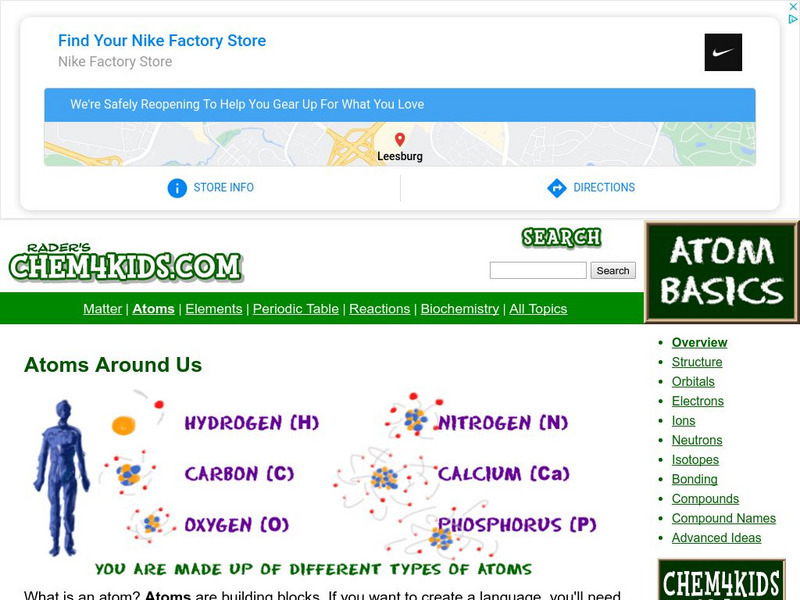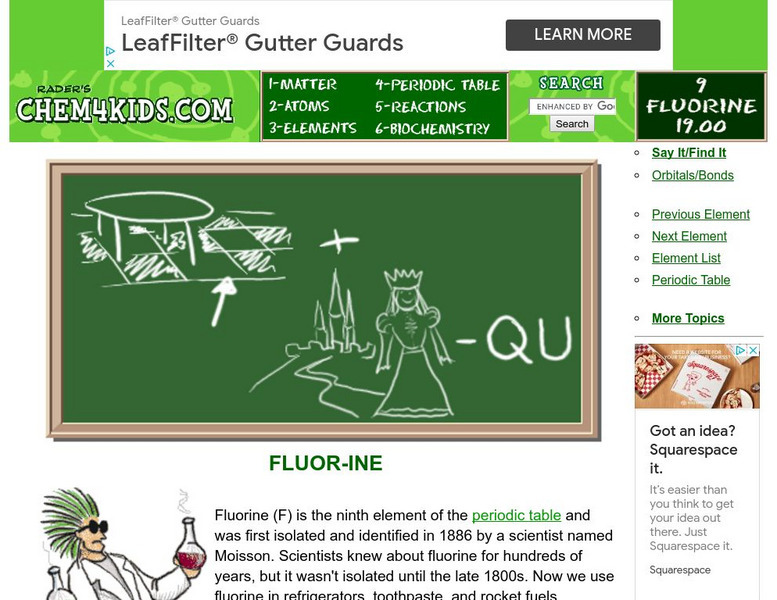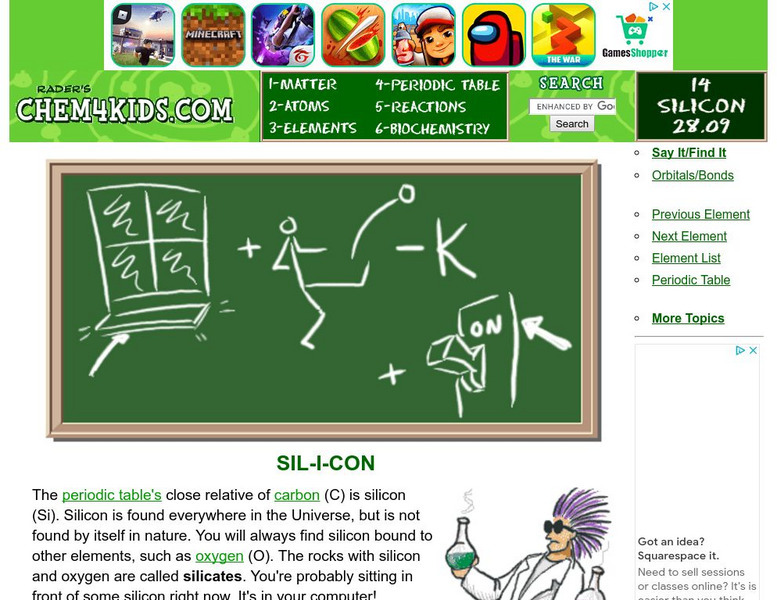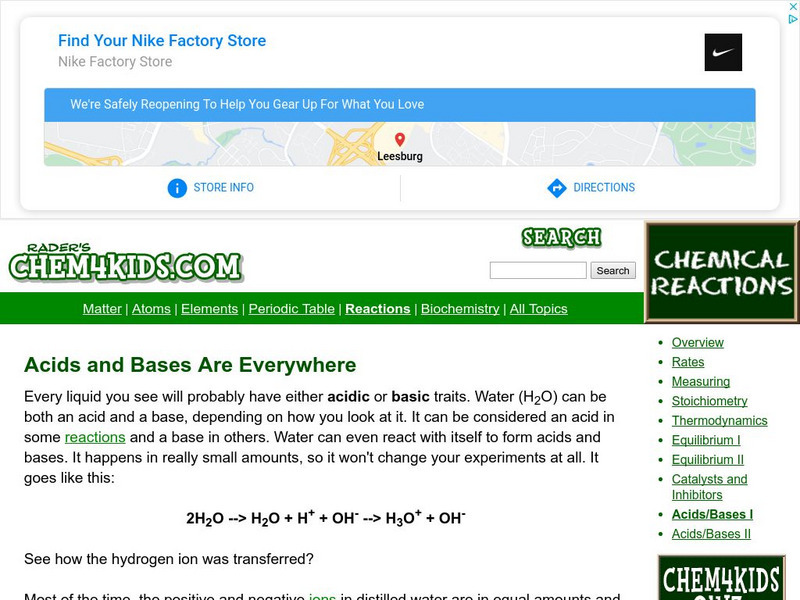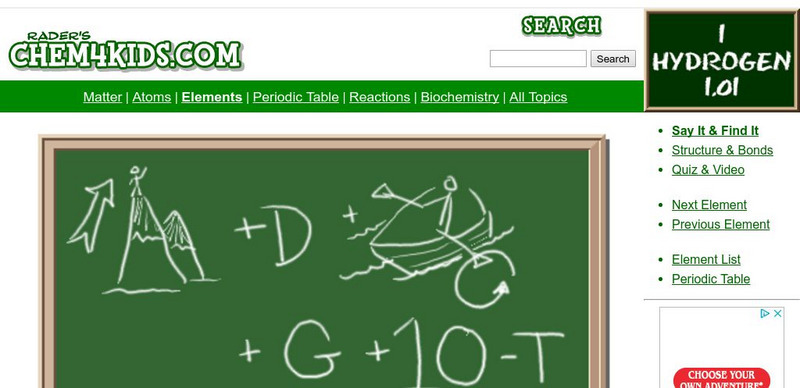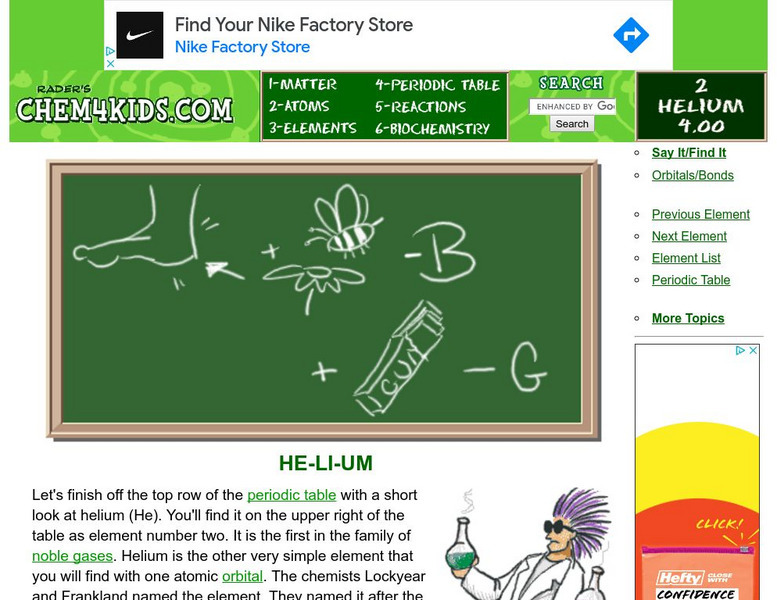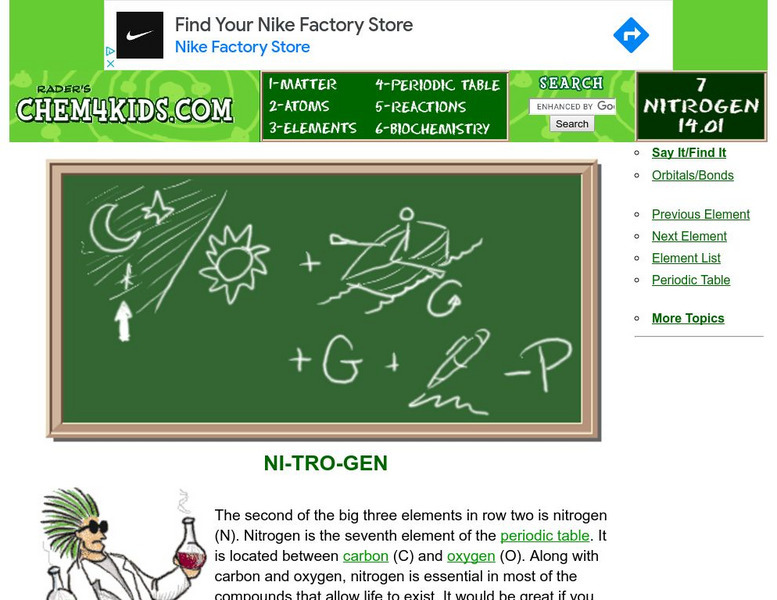It's About Time
Chemical Names and Formulas
Abracadabra! Provide your class with the tools to perform a chemical "magic show" as they predict the charges of various ions, determine ionic compound formulas, and make observations to determine when a chemical reaction between...
National Institute of Open Schooling
d-Block and f-Block Elements
Potassium permanganate, containing manganese one of the transition elements, has many uses such as mouthwash and propelling rockets, making it is a very diverse compound. The lesson delves into such transition elements and...
National Institute of Open Schooling
Chemical Bonding
Name is Bond, covalent bond. Through readings and answering questions, classes explore the different types of chemical bonds, their characteristics, valence shell electron pair repulsion theory, and atomic orbitals.
National Institute of Open Schooling
Solid State
Crystal comes from a Greek word meaning ice. Activity eight in a series of 36 has class members analyzing amorphous and crystalline solids and further classifying them based on their forces. They then explore solids, learning about unit...
Clackamas Community College
Clackamas Community College: Ionic Compounds
This site on ionic compounds looks at why they form networks and why they are compounds. There is also a section on determining formulas for ionic compounds with several examples provided.
Other
Aus E Tute: Naming Ionic Compounds
This tutorial offers an explanation and multiple examples of ionic compounds and how to name them appropriately. Includes a small quiz to test your understanding.
Science Struck
Science Struck: Ionic Compounds vs. Molecular Compounds
Explains what ionic and molecular or covalent compounds are, their properties, and the differences between them.
Other
Dr. Rod Beavon: The Solubility of Ionic Compounds
A detailed discussion of solubility as a function of Enthalpy and Entropy. Goes way beyond the standard solubility discussion.
Frostburg State University
General Chemistry Online: Ionic and Molecular Compounds
Provides a good outline of the concepts involved in ionic and covalent bonding, with links to definition of terms. Features a list of common molecular compounds and a chart that compares ionic and molecular compounds.
Chem Tutor
Chem Tutor: Binary Covalent Compounds
An explanation of bonding in binary covalent compounds. Rules for naming binary covalent compounds using common names and system names are also provided.
Science Struck
Science Struck: Molecular Compounds
Explains what a molecular compound is, how they are named, their properties, and the difference between ionic and molecular compounds. Includes a list of molecular compounds.
Ohio State University
Ohio State University: Electronegativity & Bond Polarity
Excellent graphics help this page explain the relationship between electronegativity and bond polarity.
Chem4kids
Chem4 Kids: Atoms
This site provides a detailed overview of atoms. Content explores an atom's structure, as well as what ions are, how atoms bond, what compounds are (including how to name compounds), and what isotopes are.
Other
University of Texas at Dallas: Attractions in Compounds
Explanation of attractive forces and energy changes involved in bonding.
Chem4kids
Chem4 Kids: Fluorine
Here you can find some great information about the 9th element in the periodic table, "fluorine." Content focuses on fluorine's electrons, where you can find fluorine in nature and in the home, and how fluorine combines with other elements.
Chem4kids
Chem4 Kids: Silicon (Si)
Here you can find some great information about the 14th element in the periodic table, "silicon." Content focuses on silicon's electrons, where you can find silicon in nature and in the home, and how silicon combines with other elements.
Chem4kids
Chem4 Kids: Acids & Bases
This Chem4Kids site provides a general overview of acids and bases, and their use in chemistry. Content focuses on "names to know" and how acids and bases work.
University of Waterloo (Canada)
University of Waterloo: Lattice Energy
This site from the University of Waterloo provides in-depth and advanced information on lattice energy. the site is designed to answer the two major questions, how is lattice energy estimated using Born Haber cycle, and how is lattice...
Chem4kids
Chem4 Kids: Hydrogen
Here you can find out about hydrogen, the first element in the periodic table. Content includes shell information, where to find it in nature, and why it is helpful to us.
Chem4kids
Chem4 Kids: Helium
Here you can find lots of great information about helium. Learn about its electrons, where it exists in nature, and about the element itself!
Chem4kids
Chem4 Kids: Boron
Here at Chem4Kids.com you can find some great information about the 5th element in the periodic table, "boron." Content focuses on boron's electrons, where you can find boron in nature and in the home, and how boron combines with other...
Chem4kids
Chem4 Kids: Carbon
Click on the left navigation terms for some great information about the 6th element in the periodic table, "carbon." Content focuses on carbon's electrons, where you can find carbon in nature and in the home, and how carbon combines with...
Chem4kids
Chem4 Kids: Nitrogen (N)
Here you can find some great information about the 7th element in the periodic table, "nitrogen." Content focuses on nitrogen's electrons, where you can find nitrogen in nature and in the home, and how nitrogen combines with other elements.
Other popular searches
- Naming Ionic Compounds
- Binary Ionic Compounds
- Ionic Compounds Lab
- Covalent and Ionic Compounds
- Ionic Compounds Nomenclature
- Drawing Ionic Compounds
- Chemistry Ionic Compounds
- Building Ionic Compounds
- Chapter 5 Ionic Compounds
- Ionic Compounds Activity
- Writing Ionic Compounds
- Properties of Ionic Compounds






